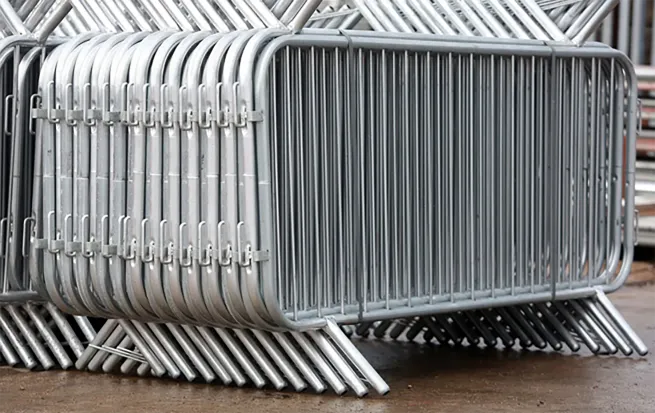
- Afrikaans
- Albanian
- Arabic
- Armenian
- Azerbaijani
- Basque
- Belarusian
- Bengali
- Bosnian
- Bulgarian
- Croatian
- Czech
- Danish
- Dutch
- English
- Esperanto
- Estonian
- Finnish
- French
- Galician
- Georgian
- German
- Greek
- hawaiian
- Hindi
- Hungarian
- Indonesian
- irish
- Italian
- Lao
- Latvian
- Lithuanian
- Luxembourgish
- Macedonian
- Maltese
- Myanmar
- Norwegian
- Polish
- Portuguese
- Romanian
- Russian
- Serbian
- Slovak
- Somali
- Spanish
- Swedish
- Thai
- Turkish
- Turkmen
- Vietnamese
Dec . 11, 2024 10:48 Back to list
Creating a Durable Cattle Panel Fence for Your Property
Building a Cattle Panel Fence A Step-by-Step Guide
Building a cattle panel fence is a practical and effective way to contain livestock and manage their movement on your property. Cattle panels, which are often made of heavy-duty wire, provide a robust structure that withstands the wear and tear associated with outdoor conditions and active animals. In this guide, we will walk you through the process of building a cattle panel fence, ensuring that you have a sturdy and long-lasting enclosure for your livestock.
1. Planning Your Fence Layout
Before you begin construction, it’s crucial to plan the layout of your fence. Consider the size of the area you want to enclose, and mark the corners and gate locations. Using stakes and string can help create a visual outline of your planned fence. Keep in mind the movement patterns of your cattle; it’s best to avoid sharp corners that could lead to accidents.
2. Gathering Materials
Next, you’ll need to gather your materials. The main components of a cattle panel fence include
- Cattle panels Typically measuring 16 feet long and 50 inches high, these panels are available at most farm supply stores. - T-posts or wooden fence posts Choose the kind of posts that will best suit your needs. T-posts are easier to install and more affordable, while wooden posts offer a more traditional aesthetic. - Wire or fence ties To secure the panels to the posts. - A gate Depending on your needs, this could be a simple swinging gate or a more robust sliding gate.
Additionally, you’ll need tools such as a post hole digger, hammer, wire cutter, and level
.3. Installing the Fence Posts
The first step in construction is installing your fence posts. Use a post hole digger to create holes for your posts, ensuring they are spaced roughly 8 to 10 feet apart. When setting the posts, make sure they are straight and level. For wooden posts, it's advisable to bury at least one-third of the post in the ground to provide necessary stability. Once the posts are in place, backfill the holes with concrete or dirt, compacting it to secure the posts firmly.
building a cattle panel fence

4. Attaching the Cattle Panels
Once the posts have set, it's time to attach the cattle panels. Begin at one end of your fence line by laying the first panel against the posts. Use the wire or fence ties to secure the panels to the posts. Start at the top and work your way down, ensuring that the panel is tightly fastened and level. Repeat this process for each panel until you reach the end of your fence line.
When attaching multiple panels, you may need to bend the ends of the panels slightly to fit snugly against the posts. Using a wire cutter, trim any excess wire from the ties to keep the area looking tidy.
5. Installing the Gate
After the panels are secured, it's time to install the gate. Position the gate in the previously marked area and ensure that it swings freely without obstruction. For added stability, secure the gate to the posts using heavy-duty hinges, and attach a latch mechanism to keep it closed when not in use.
6. Final Touches
Once your cattle panel fence is complete, inspect it for any sharp edges or protruding wires that could harm your livestock. Trim any excess materials and make sure the area surrounding the fence is clear of debris. Consider adding grass seed or planting shrubs around the fence line to enhance its appearance and provide additional shade for your animals.
Conclusion
Building a cattle panel fence is a manageable DIY project that can significantly improve the safety and control of livestock on your property. By carefully planning your layout, gathering the right materials, and following each step with attention to detail, you can create a sturdy and functional enclosure. Not only does a well-constructed cattle panel fence provide benefits for your livestock, but it can also increase the overall value and usability of your land. Whether you are a seasoned farmer or a hobbyist, this fencing method is an excellent investment that will serve you well for years to come.
-
The Vital Role of Wire Mesh in Construction
NewsJul.01,2025
-
The Essential Benefits of Welded Wire Mesh
NewsJul.01,2025
-
Secure Your Property with Field Farm Fence
NewsJul.01,2025
-
Expert Chain Link Fence Installation
NewsJul.01,2025
-
Discover the Versatility of Hexagonal Wire Mesh
NewsJul.01,2025
-
Barbed Wire
NewsJul.01,2025









